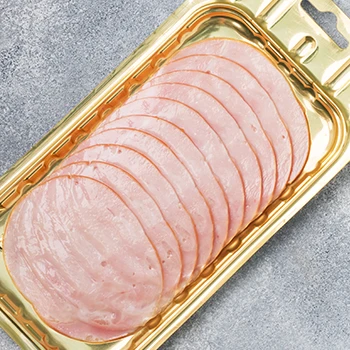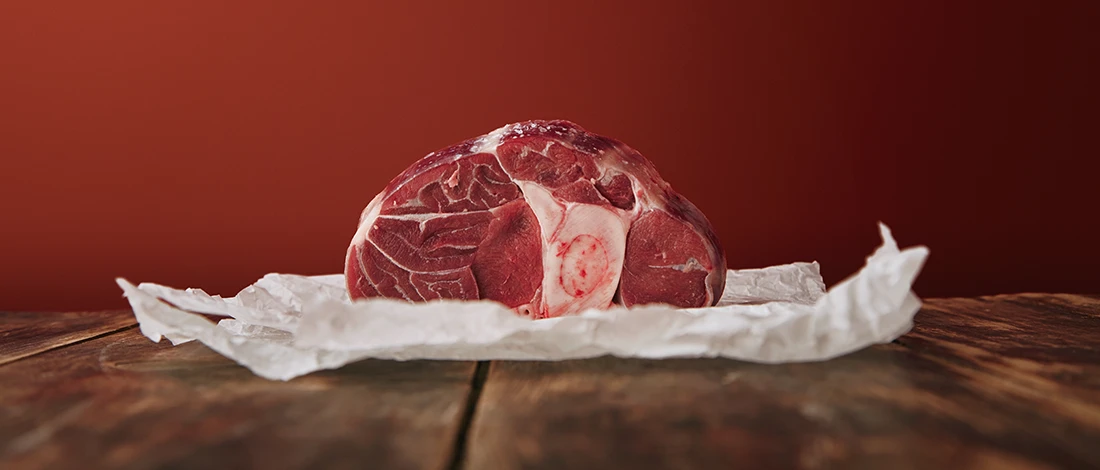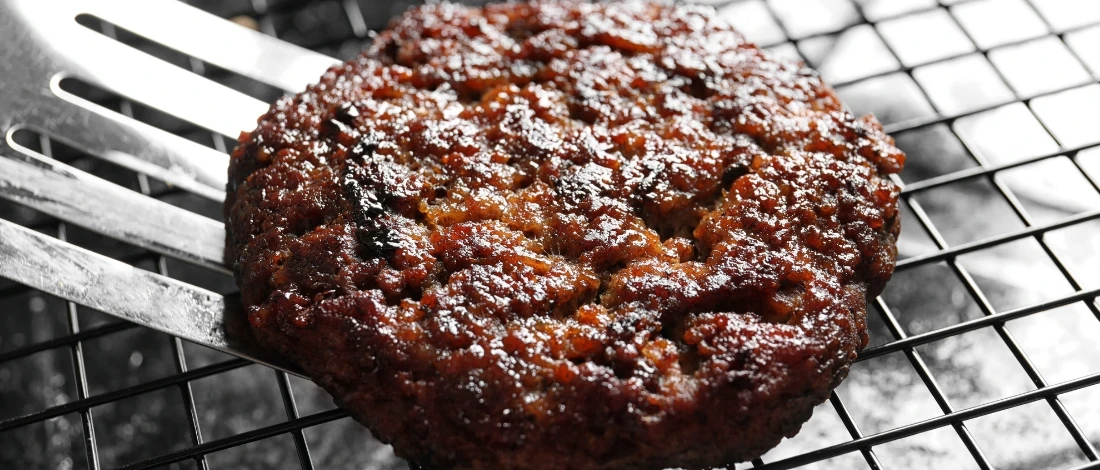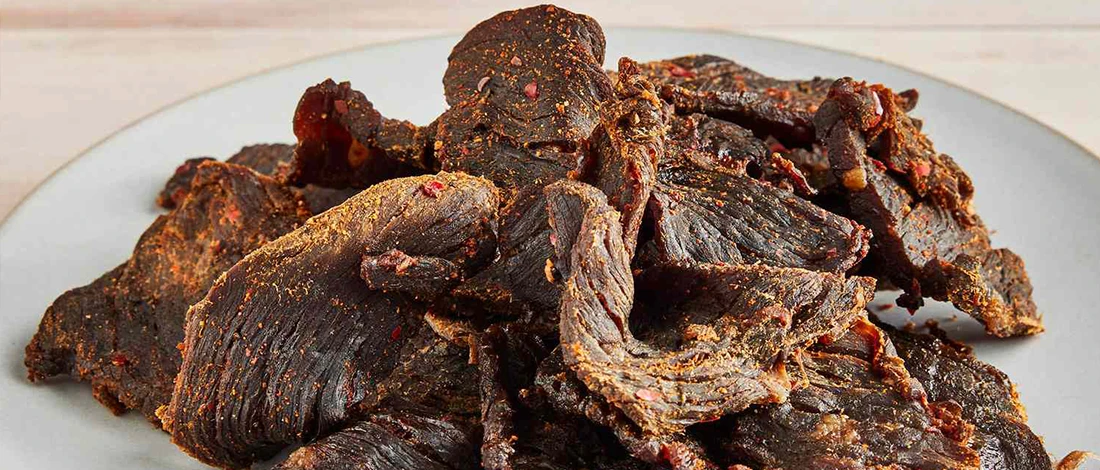I’ve been on a carnivore diet for over a decade and have eaten ham at many events and gatherings.
It then sparked my interest to know how long ham can sit out to avoid foodborne illnesses.
In my pursuit of ensuring that you enjoy your meals without compromising safety, I've invested significant time researching the intricacies of ham storage.
My research involved consultations with fellow food experts at Carnivore Style, exhaustive analysis of food safety guidelines, and hands-on experience serving countless satisfied clients.
Here’s everything you should know about how long ham can sit at room temperature and tell if it’s gone bad.
Quick Summary
- Ham can sit at room temperature for up to 2 hours before developing harmful bacteria.
- If ham sits above 40°F for an extended time, it can spoil and pose a risk of food poisoning.
- Store ham in the fridge for up to 4 days or in the freezer for up to 2 months to keep it safe.
How Long Can Ham Sit Out?

According to the USDA and CDC, ham can sit out for two hours before going bad [1] [2]. Food left at a temperature between 40 degrees and 140 degrees is at risk of growing harmful bacteria quickly.
You shouldn’t leave ham to sit overnight, both cooked or raw. If ham sits above 40 degrees for a long time, it can develop bacteria.
When you consume leftover ham not properly stored, you risk being exposed to bacteria and food poisoning.
The shelf life of cooked ham depends on how you store it. Same as raw ham, it’ll stay fresh at room temperature for two hours.
However, if the temperature is 90 degrees in summer, the ham will stay fresh for only one hour.
Ham stored in a bag or a damp tea towel will stay fresh for up to four days in the fridge or up to two months in the freezer in food storage containers [3].
It can be challenging not to leave cooked meat at room temperature, especially when you have family or friends over, such as on holidays.
But, you should store cooked ham, sliced ham, smoked ham, or honey-baked ham within the two hours it’s been exposed to room temperature. This way, you'll have leftover cooked ham you can eat in the coming days.
Overall, stick to the two-hour guideline, whether you have cooked food or raw.
“Bacteria can grow rapidly in the danger zone between 40°F and 140°F. After food is prepared, keep hot food hot and cold food cold. Refrigerate or freeze perishable food like meat, chicken, turkey, seafood, eggs, cut fruit, cooked rice, and leftovers within 2 hours (1 hour if food is exposed to temperatures above 90°F, such as in a hot car).”
- Centers for Disease Control and Prevention
Also Read: How Long Can Raw Meat Sit Out?
How to Tell Ham Has Gone Bad?
You can tell your ham has gone bad by doing sight and smell tests. You should also follow this rule: if you leave the ham overnight, toss it.
Spoiled ham will have changes in texture and color.
For example, if ham sits outside for an extended time, it’ll have a grayish tone and a slimy or sticky residue. These are the signs it’s spoiled. Moreover, the spoiled ham will have a noticeable odor. If your cured ham smells foul, don’t eat it.
Also, be careful with re-cooking ham if it’s gone bad. There’s a popular belief that you can serve ham that’s gone bad if you cook it again.
However, this is untrue, and re-cooking the ham or heating it won’t make it safe again. While it's true that heat kills bacteria, the heat doesn’t remove poisonous toxins that the bacteria leave behind.
Overall, if you leave smoked or cooked food sitting for hours, don’t reheat or re-cook, or you risk getting food poisoning.
Related Articles:
What Is the Best Way to Store Ham?

The best way to store ham is to freeze it or store it in the fridge.
Here are some tips on storing cooked foods, especially ham:
- Keep the ham warm — If you’re serving a holiday meal or a dinner that will last for hours, don’t let smoked ham sit for too long. Instead, keep a chafing dish or a slow cooker warm. The temperature should be above 140 degrees to prevent bacteria growth.
- Wrap it — If you want to eat cooked ham left over in the coming days, let it cool down, wrap it tightly, and store it in the fridge. You can wrap it in a ham bag or a damp tea towel so it doesn’t dry out.
- Store in the fridge — Place the sliced ham in an airtight container. Check that the ham is completely cooled down before placing it in the fridge. This prevents the fridge temperature from rising, making harmful bacteria grow.
- Store in the freezer — If you want to use ham later on, put it in the freezer. Freeze separate portions of the pre-cooked ham so you don’t have to thaw the whole piece simultaneously. Store ham in an airtight container so the cold air doesn’t touch the meat. This prevents freezer burn. If you have unopened country-style hams, always freeze them in the original packaging.
Move the frozen ham from the freezer to the fridge when you want to thaw ham.
Put the ham in a bowl or a tray to catch drips, and leave it overnight. Never let ham thaw overnight at room temperature, or it’ll develop bacteria.
Also Read: How Long Does Steak Last in the Fridge?
FAQs
How Long Can Ham Last Unrefrigerated?
Ham can last unrefrigerated for up to 2 hours. Beyond that, it may risk bacterial growth and should be discarded to prevent foodborne illness. However, cured hams can be left unrefrigerated for months, but regular deli ham must always be kept in the fridge.
Is Ham Safe to Eat if Not Refrigerated?
Ham isn’t safe to eat if not refrigerated. You need to keep deli ham in the fridge. Country-stale hams and dry-cured hams can be left at room temperature for about a year.
Can You Get Sick If You Eat Bad Ham?
You can get sick if you eat bad ham because you risk food poisoning from the bacteria that grows on unrefrigerated foods.
Carnivore Style is dedicated to providing you with the best meat storage tips and resources so you can enjoy high-quality, safe meals every time. Stay informed and keep your meat-loving lifestyle safe and delicious by following proper storage practices.
References:








